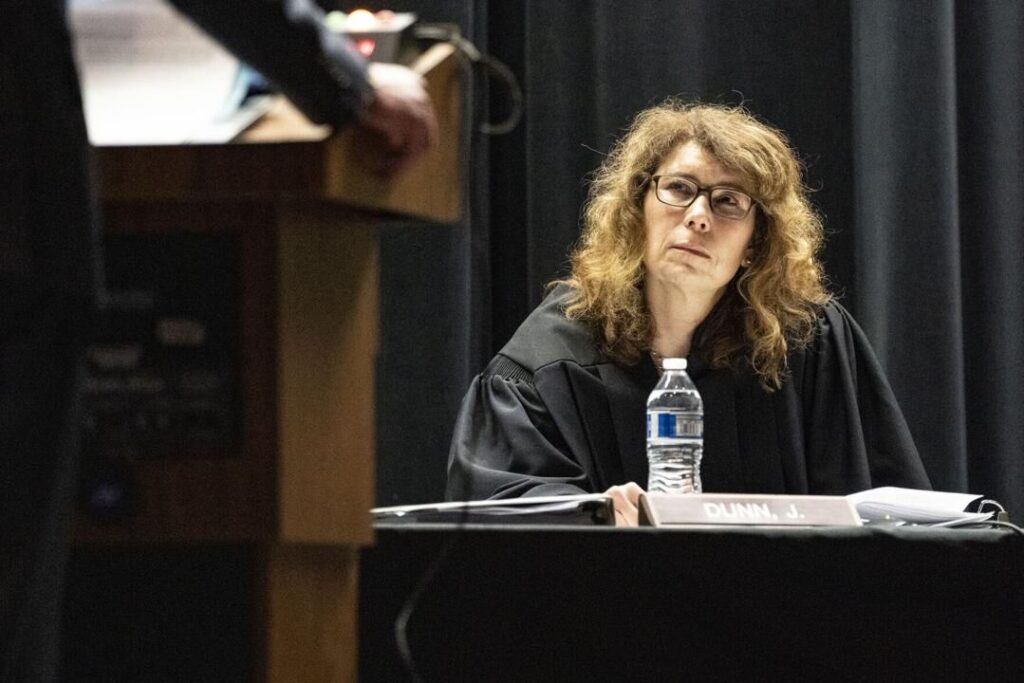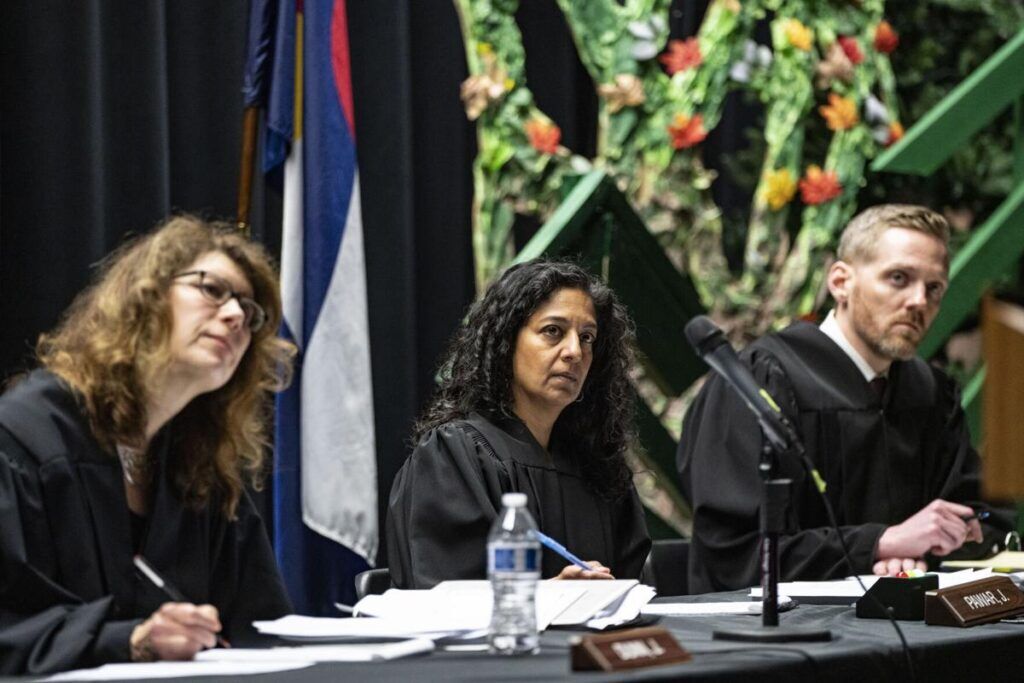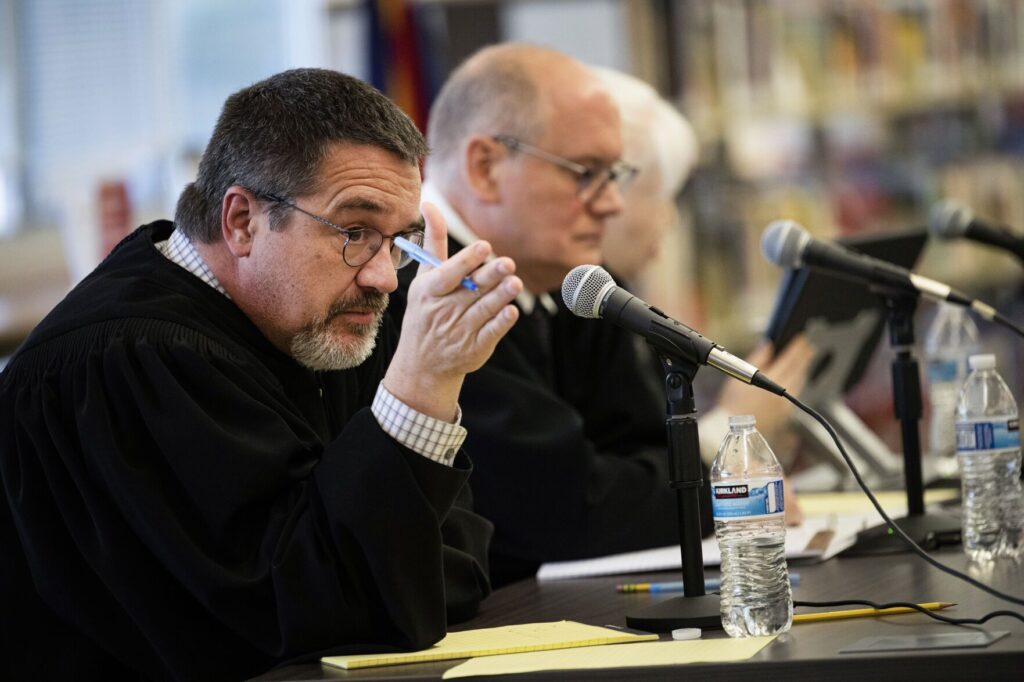Murder conviction reversed due to judge using unacceptable analogy

A man sentenced to 52 years for the grisly murder of his father will receive a new trial after the state’s second-highest court determined an Adams County judge gave an explanation for reasonable doubt that the Colorado Supreme Court recently declared unacceptable.
After the Court of Appeals had repeatedly warned judges over many years to avoid using analogies or illustrations to explain the concept of reasonable doubt in plain English to jurors, the Supreme Court stepped in last month and reversed a conviction because a judge had compared reasonable doubt to the crack in the foundation of a house.
That was the same example District Court Judge Sharon D. Holbrook provided in the 2018 murder trial of Jason Paul Beamer. A three-judge panel of the Court of Appeals consequently reversed Beamer’s convictions last week, noting the Supreme Court found the crack-in-the-foundation analogy to have lowered the burden of proof for a conviction.
“Here, too, the jury was reasonably likely to have applied the crack-in-the-foundation illustration so as to allow for conviction based on a standard lower than proof beyond a reasonable doubt,” wrote Judge Christina F. Gomez in the Feb. 17 opinion.
A Colorado Politics analysis of appeals challenging judges’ reasonable doubt illustrations found the overwhelming majority originated in Adams County. Tibbels v. People, the case the Supreme Court decided in January, also involved an Adams County judge.
A spokesperson for District Attorney Brian Mason declined to comment on the possibility of further reversals owing to the problematic comments of judges in the jurisdiction.
Prosecutors charged Beamer for the 2015 murder of his father, Robert Beamer, 68. Jason Beamer called his wife midday on Nov. 17, asking her to pick him up from his father’s apartment. When she arrived, Robert Beamer was lying in bed, face swollen and covered in blood. There was also blood on the wall and on Jason Beamer’s clothes.
Beamer told his wife not to call anyone, and said the victim “deserved it.” His wife described Beamer as “in his own world” and “out of his mind.” She called the police after driving Beamer home. Robert Beamer remained in a coma for more than a week, eventually dying of blunt force trauma to his head.
Beamer claimed at trial that he had struck his father in self-defense and had not intended to kill him. A jury convicted him of second-degree murder and felony menacing.
On appeal, Beamer argued Holbrook lowered the prosecution’s burden of proof by likening the concept of reasonable doubt to the crack in the foundation of a home.
“Say you’re going to buy a home in Thornton and the realtor takes you in. It’s in, you know, a great neighborhood, it’s exactly where you want to be, the price is in your range, and you go in and you see a few cracks around some of the doors,” she said during jury selection. “Because of those cracks around the doors and the doorjambs, would that cause you hesitation?”
A juror responded in the negative.
“Let me change it for you just a little bit. This time you go in and the cracks go all the way up to the ceiling,” Holbrook continued. “Now would you hesitate to act when – in buying this house?”
The juror responded that they would hesitate. Holbrook added that her analogy “shows you (the meaning of) beyond a reasonable doubt,” and that she wanted to give the jury “some tools to be able to interpret the law.”
The Supreme Court, in the Tibbels case, found fault with a virtually identical illustration from a different judge. The judge in that case, the court said, made it seem as if the defense needed to provide a reason, akin to a foundational crack, for jurors to hesitate. In reality, the obligation falls on the government to prove its case.
Furthermore, even though the trial judge also gave the legal definition of reasonable doubt, the erroneous analogy likely served as an anchor in jurors’ minds.
“In our view, the trial court’s focus on this nonlegal, real-world example made the illustration highly significant and ensured that the jury would give it undue weight,” Justice Richard L. Gabriel explained in the court’s Jan. 10 opinion.
Quoting from the Tibbels decision, the appellate panel in Beamer’s case agreed the convictions could not stand, given the substantial similarities between the two sets of comments.
Holbrook’s illustration “may have given the impression that Beamer had an obligation to present evidence to create a reasonable doubt,” Gomez wrote.
The panel also decided that, in a new trial, Beamer’s jury could conclude that Beamer used nondeadly physical force on the victim in self-defense, and that Robert Beamer’s poor health led to his death. Gomez indicated that jurors should hear an instruction that Jason Beamer used force in self-defense, but not in a manner intending to cause death.
The case is People v. Beamer.













